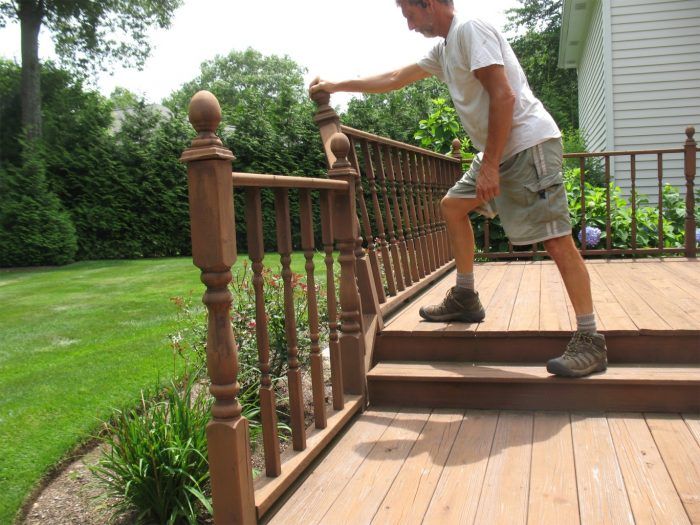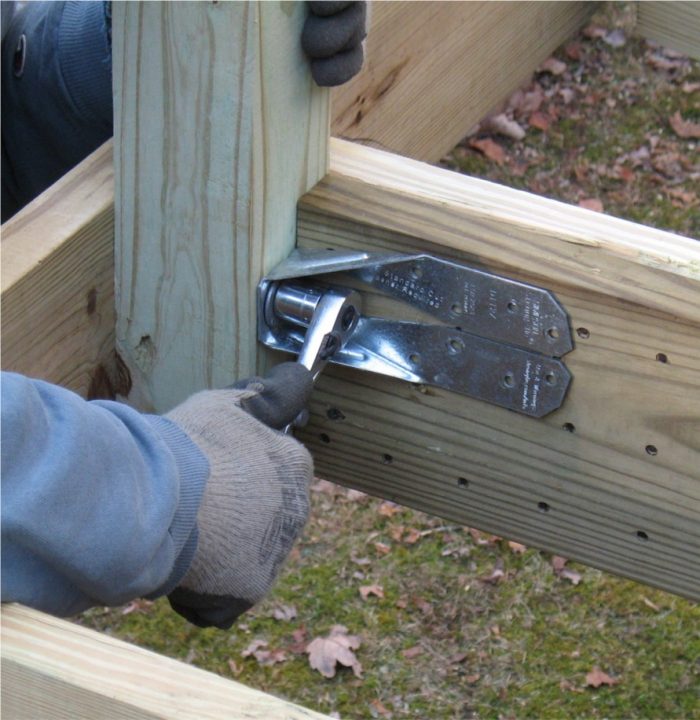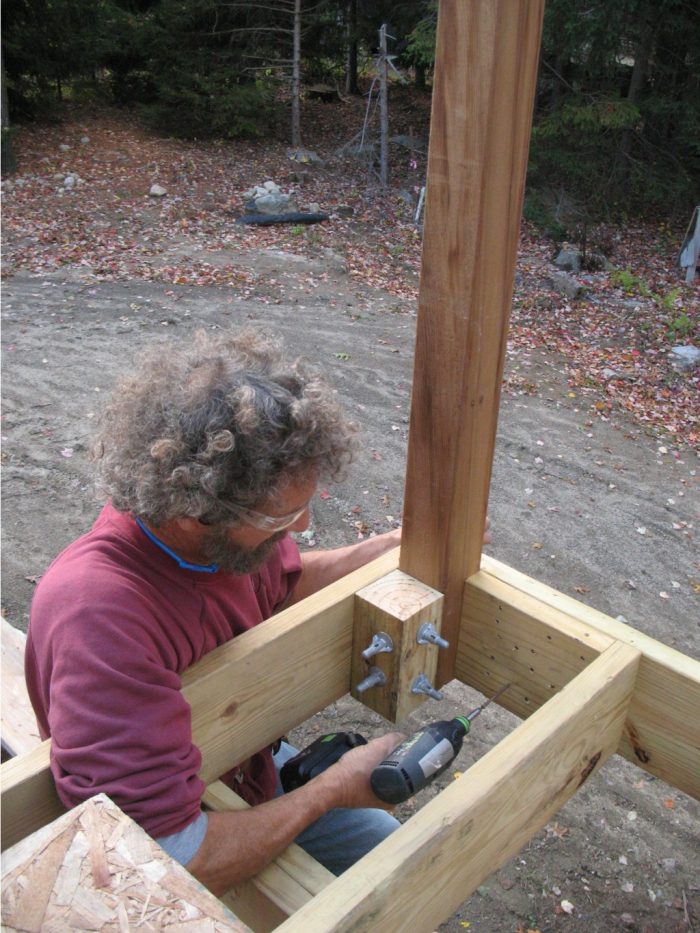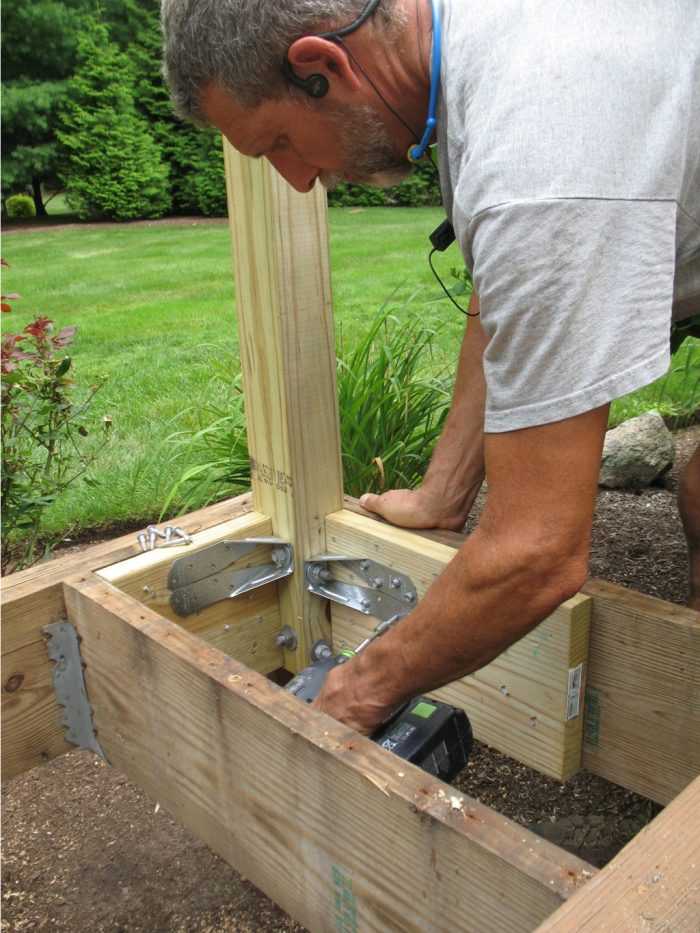Reinforcing an Existing Deck Guardrail
Secure a weak guardrail system by installing metal connectors or blocking and screws to reinforce the structural guardrail posts.

While responding to comments and questions related to my recent Fine Homebuilding Shop Class video on Options for Fastening Deck Guardrails, I realized how there’s just as much of a need to fix existing deck railings as there is to build sturdy new ones. Wobbly deck guardrails can be unnerving and, more importantly, unsafe. Plus, guardrail post-to-frame attachment that the deck builder or homeowner used when the deck was originally built may feel stable, but after years of exposure to weather and people leaning against it and the fasteners, blocking and framing may have become loose or otherwise weakened.


Existing guardrail posts can be retrofit with reinforcing connectors or blocking and screw arrangements that will make the guardrail system safe and sound. The methods are the same as when installing guardrail posts on a new deck, but will require accessing the post-to-frame connection from beneath, if there’s room, or removing a couple of deck boards for access from the top.
First evaluate the guardrail posts and deck framing to make sure they are in good condition without any cross-grain splitting, rot, cuts, or notches. Posts should be a minimum 4×4 size and not notched around any framing. Joists must be a minimum 2×8 size.
Then determine which system makes the most sense to reinforce each post—a blocking-and-screw system or a metal-connector reinforcement system.

Blocking may already be in place but may have come loose or not been arranged in a fashion that transfers the force on a post into the deck frame. Compare the blocking around each post on the deck to the blocking systems in these resource references:
Code-Complaint Screwed Guardrail- Post Connections
Modify or adapt the existing blocking to configure post reinforcement to match or similar to a blocking-and-screw configuration in one of the examples. And use long structural screws and bolts to reinforce the old blocking and additional blocking to ensure strong, durable attachment.
If there is currently no blocking or existing blocking isn’t substantial enough to secure a post, it may be easier to retrofit metal connectors to transfer forces on the post into the frame of the deck. Look at the connections in these resource references:
Code-Complaint Guardrail Post Connections
You don’t need to use the blocking-and-screw system or metal-connector system on all posts on a deck. Select the system that makes sense for each post considering access and how easy one system is compared to the other for a post location.
For more about framing sturdy decks take a look at:
Shop Class Video Series: Critical Deck-Framing Connections – Get an overview of all of the critical deck connections required by code, including fastener and hardware options for each connection.
Guide to Deck Framing – These 12 Articles and Videos will show you how to build a deck that is safe, solid, and secure.
Fine Homebuilding Recommended Products
Fine Homebuilding receives a commission for items purchased through links on this site, including Amazon Associates and other affiliate advertising programs.

4-Gallon Piston Backpack Sprayer

Drill Driver/Impact Driver

Lithium-Ion Cordless Palm Nailer






























View Comments
Why does anyone still use wooden guardrails? Decks are enough work to maintain properly without having to annually stain all of those balusters, posts, the top rail, bottom rail, etc. ...and all that special installation hardware. Just install an aluminum rail system and be done with it. But I wouldn't go with a big box store product. I've seen a big box store installation that was quite shaky. The post fasteners are so shockingly short I doubt that they're code certified. (The product that I installed is Eng. Certified, even for highrises.)
Just one caveat.. To prevent galvanic corrosion, use plastic washers, etc, to electrically isolate the aluminum from any pressure treated wood, including the fasteners that may go through cedar deck boards to the P.T. structure.